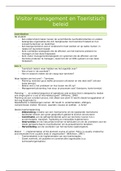Resume
Summary Cases in Maritime and Transport Law (Kul Antwerpen)
- Établissement
- Katholieke Universiteit Leuven (KU Leuven)
Complete summary of Maritime and Transport Law (Kul Antwerpen) for Masters in Business Administration students Prof. Michiel Spanjaart
[Montrer plus]













